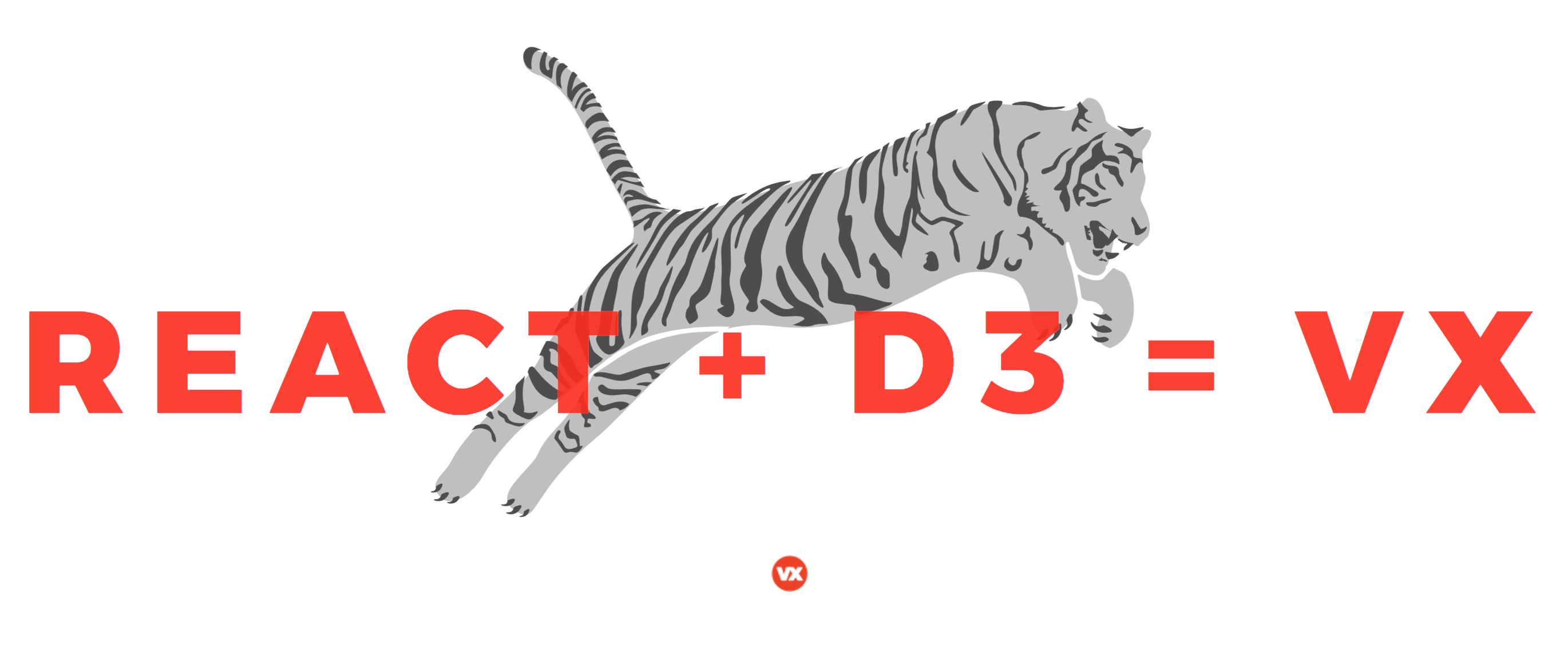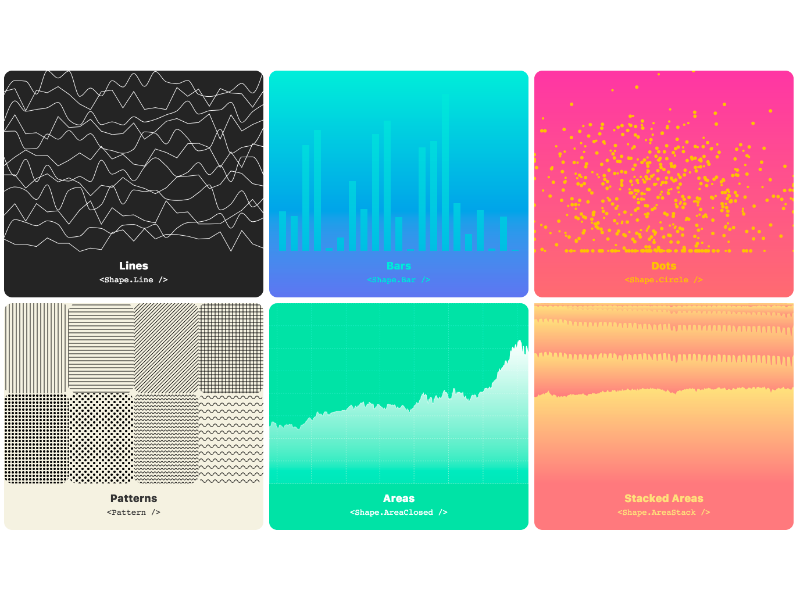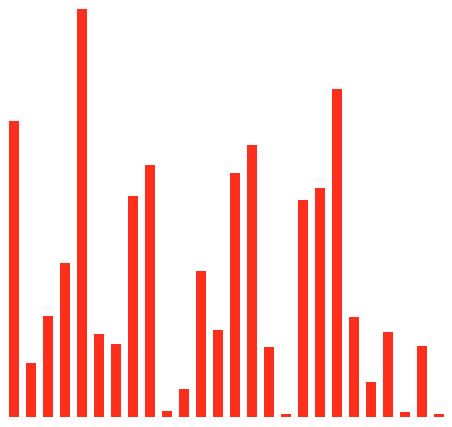vx is collection of reusable low-level visualization components. vx combines the power of d3 to generate your visualization with the benefits of react for updating the DOM.
Docs • Gallery • Blog • Changelog • Getting started tutorial
Let's make a simple bar graph.
import React from 'react';
import { letterFrequency } from '@vx/mock-data';
import { Group } from '@vx/group';
import { Bar } from '@vx/shape';
import { scaleLinear, scaleBand } from '@vx/scale';
// We'll use some mock data from `@vx/mock-data` for this.
const data = letterFrequency;
// Define the graph dimensions and margins
const width = 500;
const height = 500;
const margin = { top: 20, bottom: 20, left: 20, right: 20 };
// Then we'll create some bounds
const xMax = width - margin.left - margin.right;
const yMax = height - margin.top - margin.bottom;
// We'll make some helpers to get at the data we want
const x = d => d.letter;
const y = d => +d.frequency * 100;
// And then scale the graph by our data
const xScale = scaleBand({
rangeRound: [0, xMax],
domain: data.map(x),
padding: 0.4,
});
const yScale = scaleLinear({
rangeRound: [yMax, 0],
domain: [0, Math.max(...data.map(y))],
});
// Compose together the scale and accessor functions to get point functions
const compose = (scale, accessor) => (data) => scale(accessor(data));
const xPoint = compose(xScale, x);
const yPoint = compose(yScale, y);
// Finally we'll embed it all in an SVG
function BarGraph(props) {
return (
<svg width={width} height={height}>
{data.map((d, i) => {
const barHeight = yMax - yPoint(d);
return (
<Group key={`bar-${i}`}>
<Bar
x={xPoint(d)}
y={yMax - barHeight}
height={barHeight}
width={xScale.bandwidth()}
fill='#fc2e1c'
/>
</Group>
);
})}
</svg>
);
}
// ... somewhere else, render it ...
// <BarGraph />For more examples using vx, check out the gallery.
Goal
The goal is to create a library of components you can use to make both your own reusable chart library or your slick custom one-off chart. vx is largely unopinionated and is meant to be build on top of. Keep your bundle sizes down and use only the packages you need.
How?
Under the hood, vx is using d3 for the calculations and math. If you're creating your own awesome chart library on top of vx, it's easy to create a component api that hides d3 entirely. Meaning your team could create charts as easily as using reusable react components.
But why?
Mixing two mental models for updating the DOM is never a good time. Copy and pasting d3 code into componentDidMount() is just that. This collection of components lets you easily build your own reusable visualization charts or library without having to learn d3. No more selections or enter()/exit()/update().
Super beta Hold off on using this in production until I shake out some of the bigger API problems (post v1.0.0+). Check out the road to v1.
If you're a curious coder, feel free to install and play around with the packages. I recommend using --save-exact when you npm install.
Lots coming soon, check out the roadmap.
-
What does
vxstand for?vx stands for visualization components.
-
Do you plan on supporting animation/transitions?
yup!
-
Do I have to use every package to make a chart?
nope! pick and choose the packages you need.
-
Can I use this to create my own library of charts for my team?
Please do.
-
I like using d3.
Me too.
✌️




